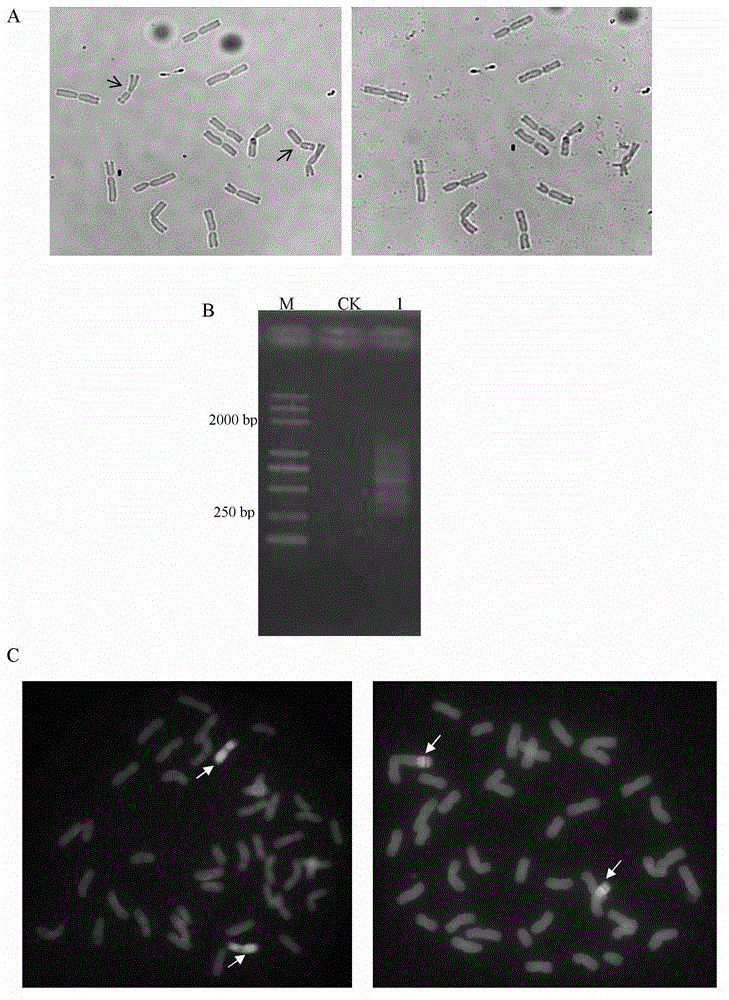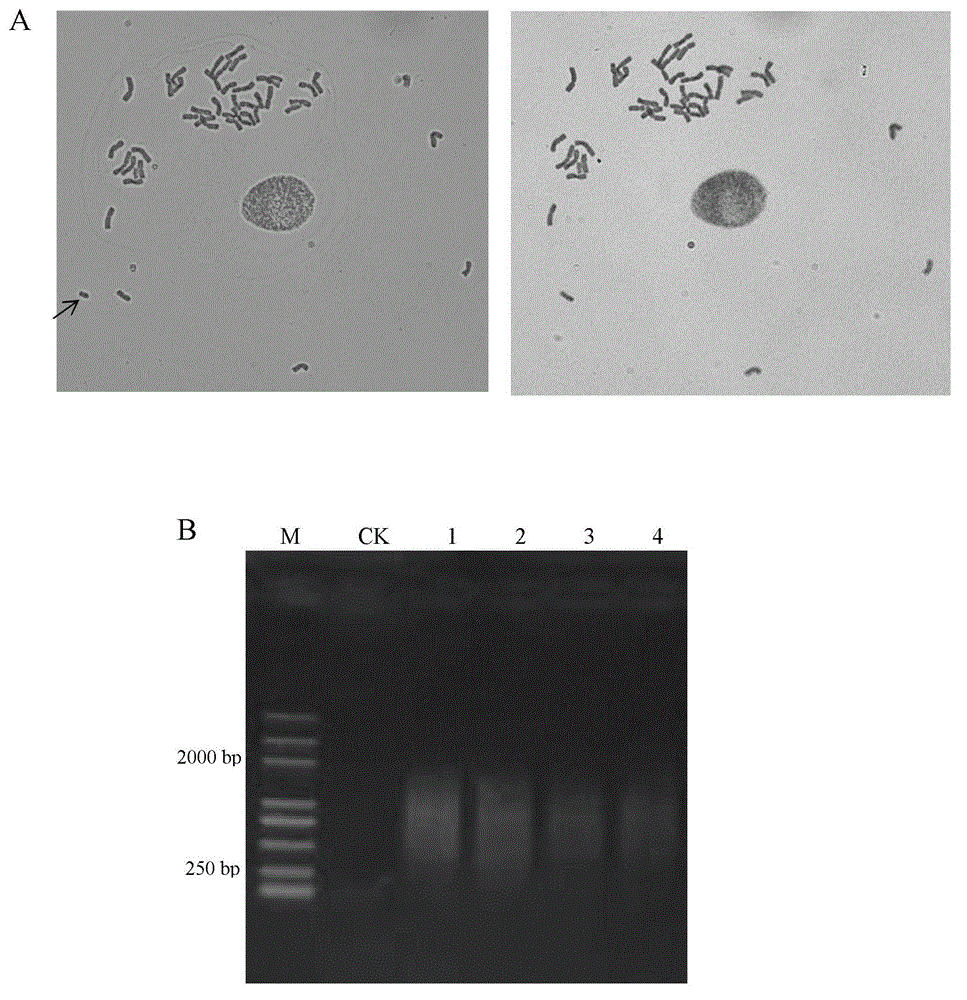Method for identifying exogenous chromosomes and chromosome segments in plant distant hybrids
A technology of chromosome fragments and chromosome painting, which is applied in the direction of biochemical equipment and methods, microbial measurement/inspection, etc., can solve the problems of unsuccessful detection, etc., and achieve the effect of clear fluorescent hybridization signal, strong specificity and strong signal
- Summary
- Abstract
- Description
- Claims
- Application Information
AI Technical Summary
Problems solved by technology
Method used
Image
Examples
Embodiment 1
[0042] Example 1. Microseparation of rye 1R chromosome and identification of additional chromosomes and chromosome fragments derived from wheat-rye addition line 1R / CS and wheat-rye translocation line 1RS / 1BL rye
[0043] 1. Preparation of Rye Mitotic Metaphase
[0044] The rye (Secale cereal) king II used was purchased from the Pasture and Livestock Research Laboratory of the United States Department of Agriculture (USDA, ARS, FRRL, UT, USA).
[0045] 1)N 2 O: Use tweezers to pierce a hole in the cover of the 1.5ml centrifuge tube, open the cover, spray water into the centrifuge tube with a spray bottle until there is a layer of water droplets on the tube wall, cut out a 1-2cm root tip and put it into the tube. Put the N 2 Treat in O air chamber for 1-3h, the pressure is 10ATM (1.01Mpa);
[0046] 2) Fix the root tip with 90% acetic acid on ice for 10 minutes (no more than 1 hour) (you can directly add 90% acetic acid to the original 1.5ml tube with holes, or transfer the r...
Embodiment 2
[0083] Example 2. Microseparation of TAI-27 additional chromosomes and identification of TAI-27 additional chromosomes by chromosome painting
[0084] TAI-27, the allotropic addition line TAI-27, is the addition of two sets of 14 pairs of chromosomes from the two chromosome groups of Thipotinum intermedia (also known as Aureus aeruginosa) to two sets of allotropic addition lines of wheatgrass. One of the departments was purchased from Northeast Normal University.
[0085] 1. Preparation of TAI-27 Mitotic Metaphase
[0086] With embodiment 1.1.
[0087] 2. Microsegmentation of the additional Thiopyrum intermedia minichromosome in TAI-27
[0088] Firstly, a fine glass rod with a diameter of 1.0 mm is manually drawn into a fine glass needle with a diameter of about 1 μm by using a Leitz needle puller under an alcohol lamp. Under an inverted microscope (Olympus1M), use a hand-drawn glass needle with the aid of a Leitz micromanipulator (code-No. 93314, purchased from Leica, Germ...
Embodiment 37
[0109] Example 3. Microseparation of 7ES / CS additional Chromosome elongatum chromosome and its chromosome painting identification of 7ES / CS additional Chromoside elongatum chromosome
[0110] Materials used The wheat-Ethiopia elongatum isoaddition line 7ES was purchased from the Weizmann Institute of Sciences (Rehovot, Israel).
[0111] 1.7 Preparation of ES / CS Mitotic Metaphase
[0112] With embodiment 1.1.
[0113] 2.7 Microsegmentation of the Additional Minor Chromosome in Echinopsis elongatum in ES / CS
[0114] Firstly, a fine glass rod with a diameter of 1.0 mm is manually drawn into a fine glass needle with a diameter of about 1 μm by using a Leitz needle puller under an alcohol lamp. Under an inverted microscope (Olympus1M), use a hand-drawn glass needle with the help of a Leitz micromanipulator (code-No. 93314, purchased from Leica, Germany) to scratch the identified chromosomes back and forth, left and right, and scrape gently. Adhered to the small chromosomes of E....
PUM
| Property | Measurement | Unit |
|---|---|---|
| Diameter | aaaaa | aaaaa |
| Diameter | aaaaa | aaaaa |
Abstract
Description
Claims
Application Information
 Login to View More
Login to View More - R&D
- Intellectual Property
- Life Sciences
- Materials
- Tech Scout
- Unparalleled Data Quality
- Higher Quality Content
- 60% Fewer Hallucinations
Browse by: Latest US Patents, China's latest patents, Technical Efficacy Thesaurus, Application Domain, Technology Topic, Popular Technical Reports.
© 2025 PatSnap. All rights reserved.Legal|Privacy policy|Modern Slavery Act Transparency Statement|Sitemap|About US| Contact US: help@patsnap.com



